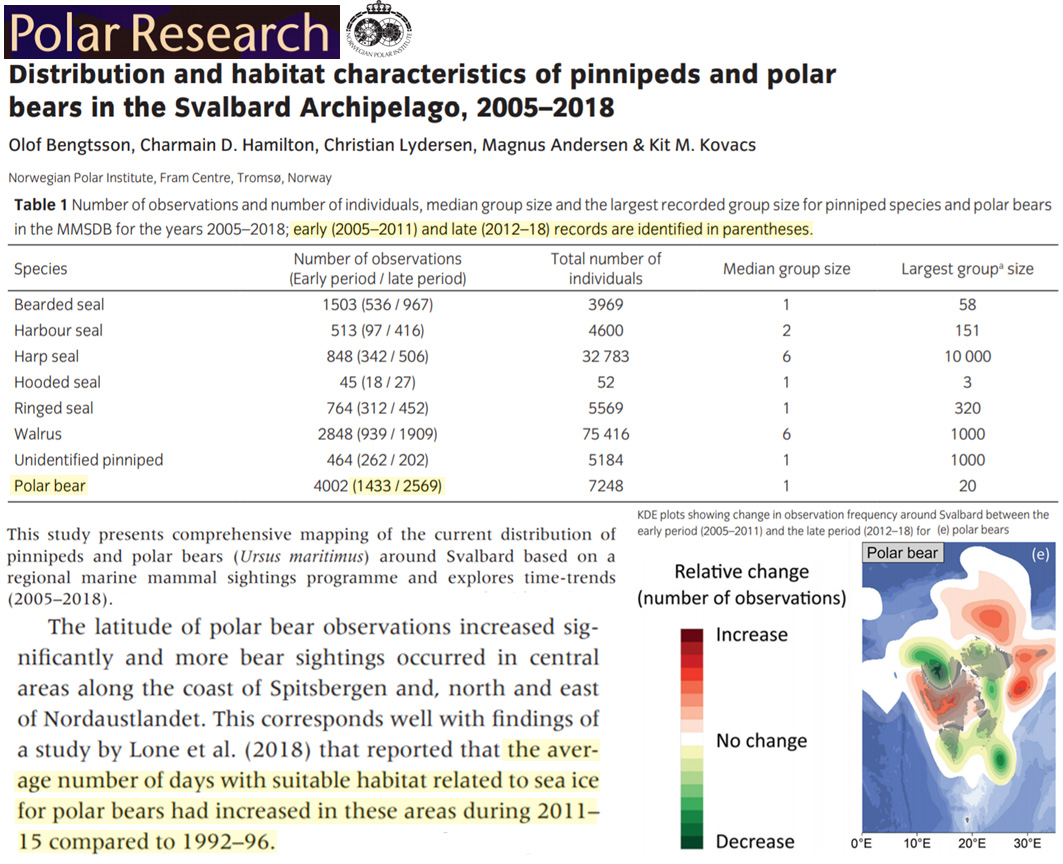Research on polar bear sightings using a systematic “regional marine mammal sightings programme” during 2005-2018 reveals there were 1,433 polar bears sightings from 2005-2011 compared to 2,569 during 2012-2018 around Svalbard.
The perspective that polar bears are endangered by global warming because reduced sea ice limits their seal-hunting opportunities is again contradicted by real-world observations.
New research (Bengtsson et al., 2021) suggests marine animals and polar bears have both been far more active and abundant in recent years compared to the past as their habitat expands around Svalbard. Not only have seal and walrus sightings risen by 50-100% since 2005, but polar bears were nearly 80% more likely to be spotted by observers during 2012-2018 when compared to sightings from 2012-2018.
Image Source: Bengtsson et al., 2021
The expanded range and rise in sightings should not be surprising. Polar bears’ worst body condition – when they’re at their thinnest – occurs during the months of the year when sea ice is thick: April and May. Polar bears’ best, well-fed body condition occurs during the months when sea ice is at its thinnest, or after the seasonal ice break-up occurs: August to October (Galicia et al., 2020).
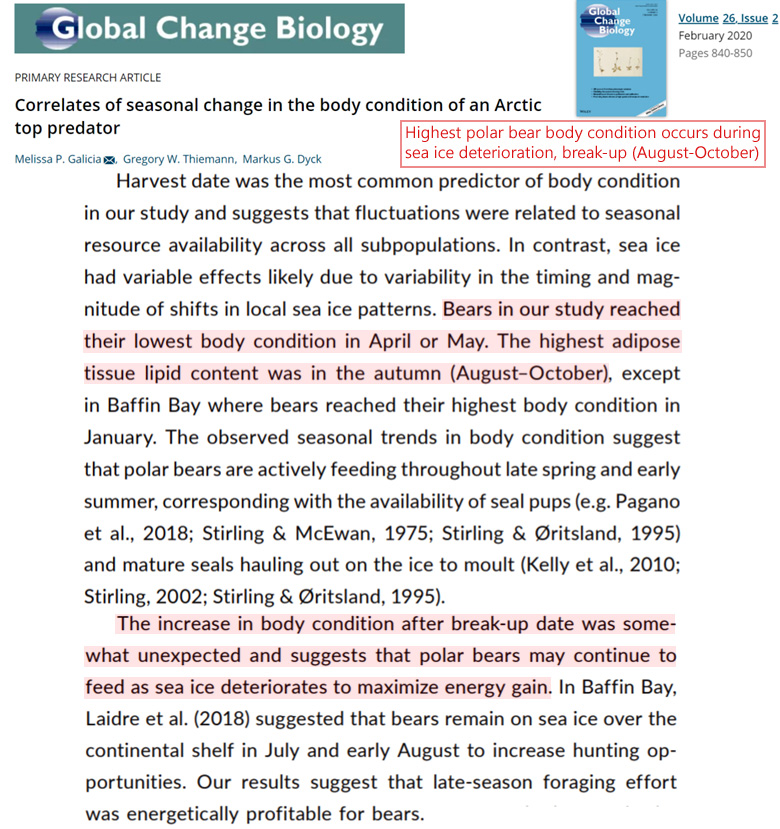
Image Source: Galicia et al., 2020
Other observational research (Bourque et al., 2020) shows polar bears were consuming no fewer seals in 2016 than they did in 2004, indicating the reduction in sea ice hasn’t limited polar bears’ feeding practices.
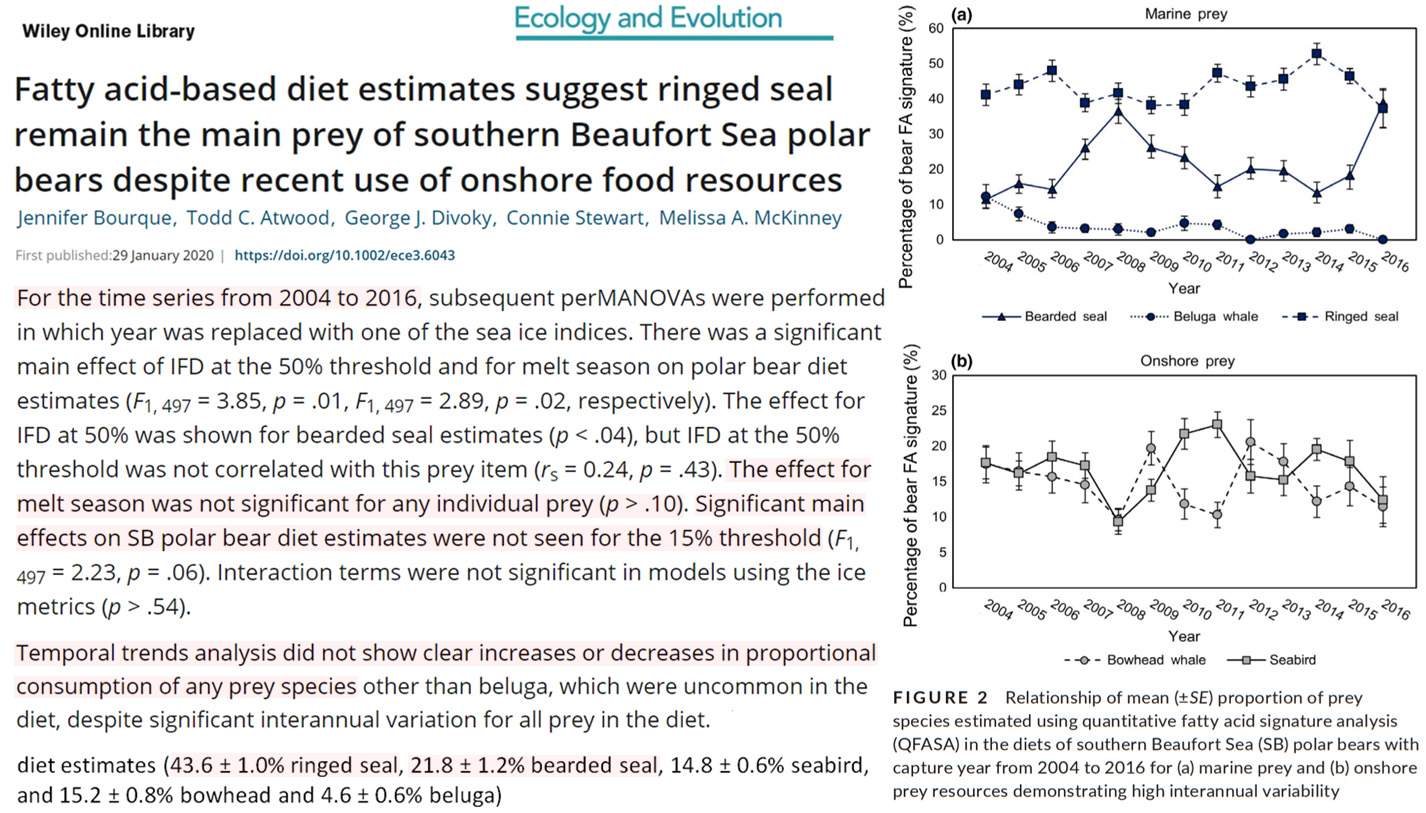
Image Source: Bourque et al., 2020
Empirical estimates have affirmed Chukchi Sea polar bear populations have been “productive in recent years” and their “body condition and reproduction…did not decline between 1986-1994 and 2008-2011” (Regehr et al., 2018).
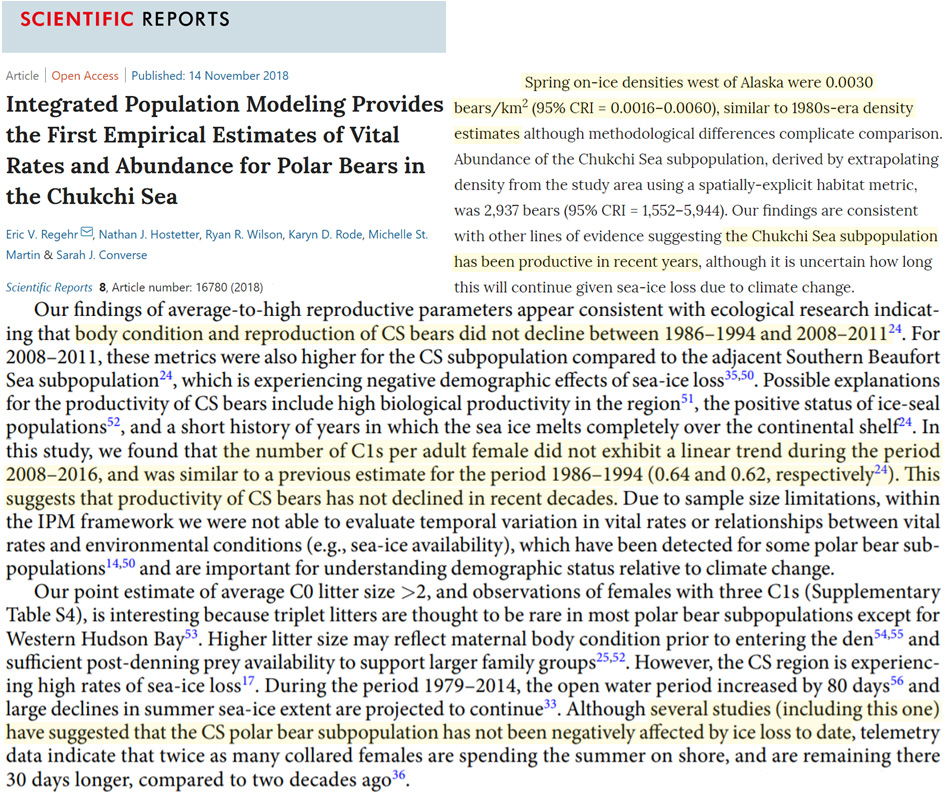
Image Source: Regehr et al., 2018
Thriving polar bear populations have even become a problem for residents who share their geographical area. Inuit have for years reported there are too many polar bears in the Arctic now, and this consequently puts humans in danger.
But activist scientists – who don’t live in the region but who nonetheless think they know better – claim polar bears are endangered and their populations shrinking due to sea ice decline.
Political activism seems to have supplanted real-world scientific observation.
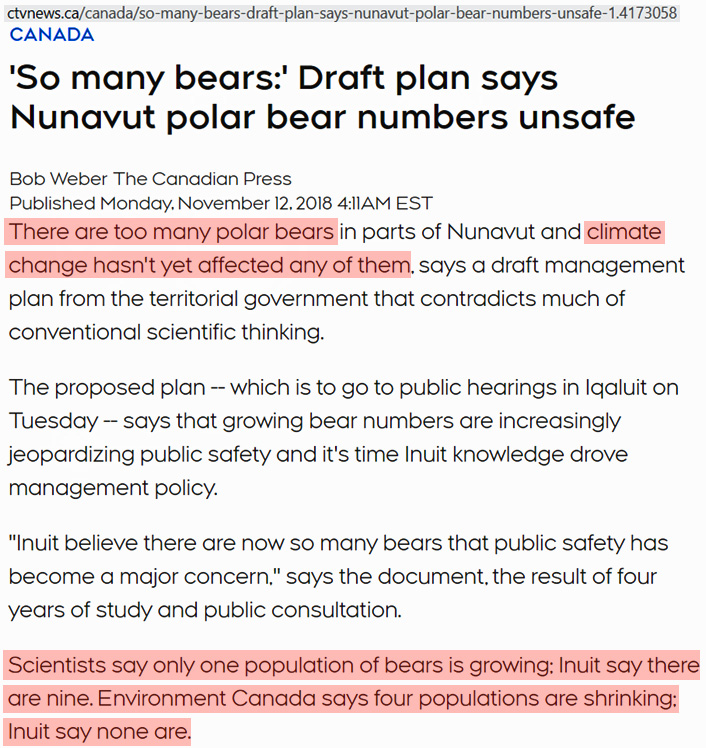
Image Source: CTVNews (Canada)
via NoTricksZone
February 22, 2021 at 11:43AM

